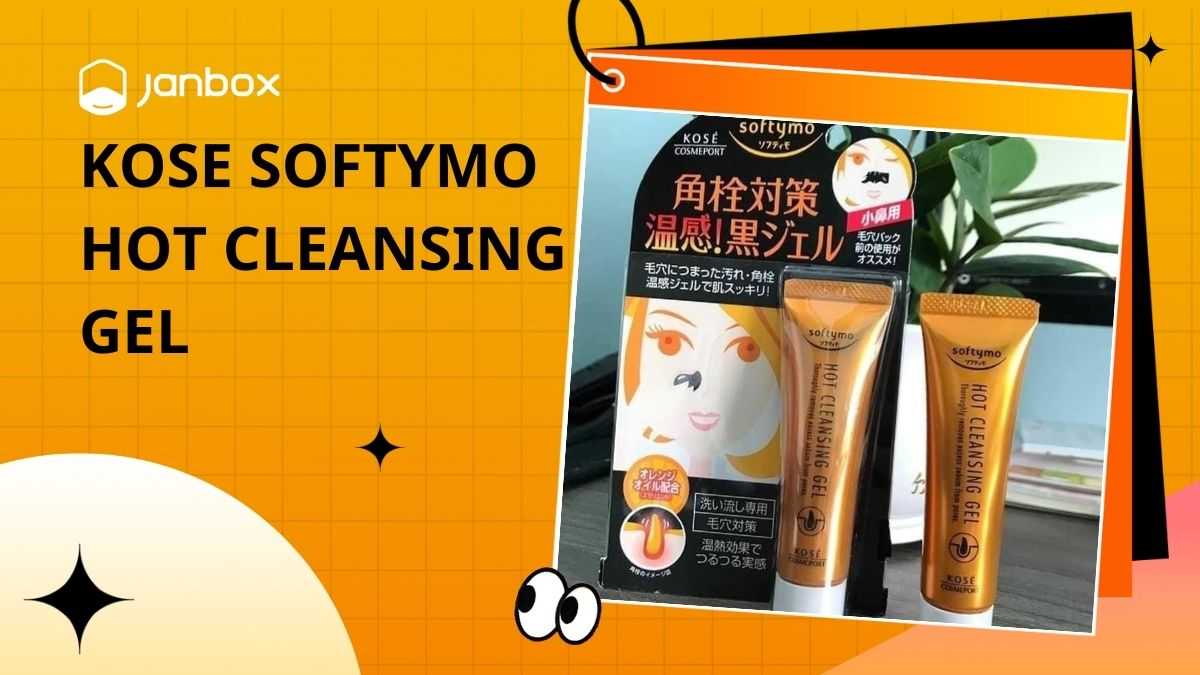The fleece jacket has evolved into a perennial emblem of winter and outdoor attire since the late 1980s. It’s understandable why the material got as well-liked as it is today as it is a sort of cloth that is both lightweight and very functional. But what is fleece? What materials makeup fleece? How is it produced? What purpose serves fleece? These are just a few of the queries that our article on fleece fabric will address.
I. The Definition Of Fleece
What is fleece? One of the most dynamic and adaptable textiles for apparel, blankets, coats, and other accessories is fleece. Polyethylene terephthalate (PET), a form of polyester, or other synthetic fibers are used to create fleece, a synthetic insulating fabric. Its low weight, antiperspirant properties, and ability to let moisture drain while preventing outside dampness makes it exceptionally comfortable. Sportswear and winter clothing benefit significantly from their breathability and quick drying properties. Fleece is a wool substitute that is also vegan because it exclusively employs synthetic fibers. So fleece fabric is good for winter clothing production to save money of manufacture.

Only a few decades have passed since the development of the fleece. Aaron Feuerstein of Malden Mills was the project’s driving force, and the creation of fleece fabric didn’t really get underway until the 1970s. Beginning in the 1980s, the textile company partnered with Patagonia to produce outdoor clothing using brand-new, cutting-edge fabric. Fleece was quite popular in outdoor gear by the middle of the 1980s, especially for skiing. Fleece could be found in the majority of outerwear shops. The function of fleece has been enhanced thanks to ongoing improvement. Fleece as a fabric has unquestionably advanced from the original Synchilla fleece to the exceedingly fine polyester fibers of today.
II. The Ingredients That Makeup Fleece
Polyester is typically used to create fleece. Polyester fiber is obviously a kind of polymer in and of itself. The fine, brushed fabric of a particular polymer, synthetic fibers, is woven into the thick fabric of the fleece. The textile industry uses this kind of polyester to create lightweight fabrics. Occasionally, additional natural fibers like wool, hemp, or rayon are woven into the cloth to give it a unique texture or vibrant color. It may also be produced from recycled plastics, such as water bottles, providing it a cost-effective advantage while also being environmentally beneficial.
III. Characteristics Of Fleece
Fleece has numerous qualities that make it the perfect fabric for chilly climates. Fleece is such a beloved and well-liked fabric because of its incredible qualities including wear-resistant (durable), soft and comfortable to wear, lightweight, odor-resistant, wrinkle-resistant, and so on.

1. Resistance to Water and Quick Dry
One benefit of its synthetic manufacture is the water resistance, which comes from the plastic fibers. Additionally, it is one of the denser materials available, making it more difficult for water to get through in any case. Because of its water resistance, the fleece should dry rapidly if it does get wet. It is the perfect material for usage in the winter because of these characteristics, especially if you want to wear sportswear outside yet live in a snowy environment.
2. Breathability
You might be shocked to find how breathable fleece is once you put it on. Due to the excellent air circulation, this might be fantastic for coats so that you do not perspire excessively. The fleece material, however, may also be used as permeable floor protection, which is perfect for some floors that need to ‘breathe,’
3. Washable in a machine
The ability to machine wash fleece is just another fantastic feature. The fleece fabric clothing should be simple to wash in a washing machine because the fibers are synthetic. This does make fleeces a fantastic option for kids whose clothes are likely to collect stains but you still want to keep them warm.
4. Warmth
Generally speaking, fleece fabric is excellent for insulation and is frequently worn in chilly climates. Due to the several fiber layers on both sides of the fleece fabric, air may be trapped as a result. The fleece’s capacity to retain heat is mostly due to this one property.
5. Vegan
Once you accept the reality that fleeces are manufactured using synthetic materials rather than using animal fur, this becomes a vegan alternative. The material is hypoallergenic when compared to wool, which may be a crucial quality from an ethical standpoint. It can be a fantastic option for anyone who has a wool allergy since it should continue to be comfortable and you shouldn’t be as prone to skin irritation or itching while wearing it.
Of course, fleece cloth has a few drawbacks. For instance, the texture of fleece can produce a lot of static. Additionally, it can’t be subjected to high temperatures and is prone to pilling. Because fleece is comprised of plastic, extreme heat may melt the fibers.
IV. Is Fleece Sustainable?
Let’s examine fleece’s effects on the environment! Typically, it uses non-renewable materials and requires an additional chemical coating to be windproof and/or water-resistant, which is bad for the environment. Furthermore, fleece must be changed quite frequently because it can only withstand so many washings and dryings before beginning to show symptoms of wear.

Eco-fleece, which uses recycled polyester, is preferable because it uses less energy and less of its main component, raw petroleum. Additionally, it could lessen the number of bottles dumped in landfills. However, recycled or not, synthetic fibers present an issue since they do not biodegrade and have a propensity to bond with molecules of dangerous chemical contaminants prevalent in wastewater, such as pesticides.
V. Types Of Fleece
There are a variety of fleece materials available, and each has unique qualities. From light and airy French Terry fleece to stretchy lycra spandex fleece. Let’s explore the following list of types of fleece:
1. Polar Fleece
One of the toughest kinds of fleece is polar fleece. It is also one of the fleece varieties that is most frequently used for garments and accessories. It is a synthetic fabric designed to mimic the characteristics of wool. It is far more affordable than wool and much softer to the touch. This type of fleece is meant to be exceptionally soft and simple to clean and is frequently created from recyclable materials. Polar fleece first appeared in 1979 and was created to resemble genuine sheepskin.

A piece of clothing that is simply branded “fleece” is almost certainly made of polar fleece. Polar fleece is extremely warm and is available in several thicknesses. But as it gets thicker, it also gets stiffer. Polar fleece, on the other hand, is a good water repellent and dries rapidly even when completely soaked. It won’t matter if it gets wet; it will still keep you warm. One of the nicest varieties of fleece to wear in chilly, occasionally rainy, winter weather is this one.
2. Microfleece

The fleece fabric with the word “micro” in its name is the lightest and thinnest among the available options. This may be worn comfortably since it doesn’t make you feel heavy because it can weigh as little as 200 grams per square meter or even less. Because microfleece has more inherent flexibility, it may be worn as a base layer or over the clothing. Because microfleece is thinner than regular fleece materials, it won’t provide as much insulation but will be more breathable. Because of its permeability, it works well in outerwear like jackets and shirts as well as in sportswear and bathrobes.
3. Coral Fleece
Super-soft textiles, such as those used for baby blankets or clothing, sometimes contain plush fleece. It is well renowned for its 3mm thick plush pattern on both sides of the fabric and goes by the names coral fleece or raschel fleece. Its inadequacy as a fabric for no-sew crafts is one of its flaws. It is also not a cheap alternative, costing about $12 per yard in some retailers. Polar fleece costs roughly a third as much, and some places sell it for approximately $4 per yard.

Although they differ quite a bit, coral fleece and polar fleece are sometimes mistaken for one another. Coral fleece is thicker and furrier than polar fleece, which is the fundamental difference between the two materials. Coral fleece is more costly than other varieties of fleece because of its extremely soft feel, which many people do enjoy.
4. French Terry Fleece
A mid-to lightweight fabric is French Terry fleece. Because of its soft material, it works well for loungewear products like sweatpants, hoodies, or sweaters. French Terry isn’t necessarily a form of fleece, despite the possibility. Additionally, it differs significantly from traditional varieties of fleece since it contains additional synthetic fibers in addition to polyester and is not manufactured entirely of polyester. Usually, rayon is incorporated into the fabric to some extent.

The word “French Terry” derives from the verb “tirer,” which means “to pull” in French. When it comes to the creation of the fleece, French Terry comes from terrycloth, which was created by weaving together denser, more woven strands of fabric. These textiles got lighter as looping developed on one side, leaving the other side smoother, softer, and more stretchable.
The Juicy Couture tracksuit was among the first items to employ French Terry, along with joggers and sweatpants. Since fleece is recognized for being cozy, it may also be used for loungewear. This fleece differs significantly from others in that it is not brushed, making it less fluffy, and it has a looser weave, which should make it less warm.
5. Mid Weight Fleece

Between 200 GSM and 300 GSM is the range of weight that mid-weight fleece covers. This style of fleece is appropriate for chilly days when you have to go on walks or excursions. Midweight fleece has several characteristics that make it suitable for such weather conditions and is warmer than Microfleece. In comparison to lightweight fleece, it provides more insulation and is more comfortable and breathable. However, because of its thickness, it provides less flexibility. It may be worn every day as an outer layer in cool weather or as a middle layer in cold weather between a base layer and a waterproof jacket.
6. Heavy Weight Fleece

As the name implies, heavyweight fleece is the most heavily positioned fabric, with a weight of 300 GSM or above. Due to its weight and thickness, it is unquestionably not as flexible as the previous two. It is a thermal fleece that works best in extremely chilly situations with little physical exertion. Nevertheless, it is also the warmest and most insulating of all three. When maximal insulation or heat is needed, it is ideal for matching in arctic or polar climates. Exercise or other strenuous physical activity should not be attempted while wearing heavy-weight fleece since it warms up rapidly. In chilly conditions, you may only use it as an outer layer.
7. Textured Fleece

A textured fleece has a patterned fabric and is heavier than a heavyweight fleece. This is frequently done for aesthetic and design reasons to create softer, more opulent-feeling fleece. Therefore, a textured fleece may be used for more formal situations. These fleeces have a weight of at least 200 to 300 g/m2. There are several alternatives available when it comes to fabric composition. However, popular fleece textiles are made of organic or inorganic materials. When it gets chilly outside, a textured fleece is the best material to use as an outer layer by itself or as a middle layer below a coat.
8. Polyester Fleece
Any fleece made of polyester is referred to as polyester fleece in general. This was the first kind of fleece created to resemble wool. Polyester fleece’s starting point is polyethylene terephthalate (PET) or another synthetic fabric. This fleece is cozy and useful because it has anti-perspiration properties. In terms of breathability, it avoids outside humidity while being light and allowing moisture to dissipate. Products made of polyester fleece are widely used and reasonably priced.

Because polyester fleece has a surface that is both smooth and soft, it has a feel similar to cotton. Despite being synthetic, it is preferable to cotton-based fleece since it is more robust and won’t shrink when cleaned. The polyester fibers are also what give fleece its exceptional moisture resistance and speed of drying. Winter gear such as coats, hats, scarves, mittens, and other articles of clothing can be manufactured from this kind of fleece fabric.
9. Cotton Fleece
Cotton fleece is created from cotton, as opposed to the majority of the other forms of fleece on this list, which is synthetic and composed of polyester. The fundamental process for creating synthetic and cotton fleece is the same. The fibers are then combed after being woven into yards and made into cloth. Cotton fleece differs significantly from synthetic fleece in that it is created from natural fibers. Cotton fleece is more breathable than synthetic fleece, which is another significant distinction between the two types of fleece.

Cotton fleece will perform a better job of moving air while yet keeping you warm than other varieties of fleece, which might feel stuffy. They are exceptionally comfy pieces of cloth since they are normally smooth on the surface and soft on the inside. They tend to lose heat more quickly than other kinds of fleece cloth since they are more permeable as well. T-shirts, sweatshirts, sweatpants, and shorts are frequently worn as gym attire.
10. Lycra / Spandex Fleece

Cotton and lycra spandex are combined to create lycra spandex fleece. Since they are distinct names for the same stretch fabric, spandex and lycra are frequently used interchangeably. Having said that, elastic fleeces like spandex/lycra are utilized to give fleece clothing a more tailored appearance. With a minor amount of spandex or lycra included, cotton makes up the majority of this sort of fleece’s composition. Additionally, spandex/lycra fleece may be used to make sports and performance clothing for cold weather. When you run or exercise outside in cooler weather, it will keep you warm while also allowing you to move freely. Children’s and women’s apparel both utilize it.
11. Sherpa Fleece
Sherpa fleece is made entirely of fluffy polyester. The sort of fleece that is most similar to sheep’s wool in terms of look and feel is sherpa. Sherpa fleece has two contrasting textures, one on each side. The smooth side is one, while the wool-like side is the other. Additionally, compared to other varieties of fleece fabric, sherpa has more elasticity.

Sherpa fleece offers greater insulation and warmth than other varieties of fleece. This particular sort of fleece is frequently used as a lining for coats or blankets. All sorts of fabrics, including corduroy and denim, may be lined with sherpa to make them warmer.
12. Blizzard Fleece

Blizzard fleece is a kind of fleece fabric that feels nicer on your skin since it is smoother and softer than anti-pill fleece. Blizzard fleece is also a little denser and thicker, making it warmer as well. This particular fleece is perfect for blankets, scarves, and gloves that will keep chilly portions of your body warm. Typically, blizzard fleece is constructed entirely of polyester fibers. It will therefore endure for a very long period and is often quite durable. It isn’t handled the same way anti-pill fleece is, though. As a result, blizzard fleece is more likely to pill.
13. Bonded Fleece

Bonded fleece is a fleece that has been attached to another object. Fleece is used as a lining and sewn to a heavier fabric for items of clothing like jackets and outerwear. In tougher regions when fleece alone won’t work, this makes the clothes warm but resistant to other factors like the wind. Two pieces of fleece that are adhered together to provide a double-sided effect are also referred to as bonded fleece. This kind of fleece may be found in a plaid shirt. Or, this kind of fleece might be utilized for clothing that isn’t as bulky and insulating as a jacket. On cool days, it works well as a thin outer layer.
14. Slub Fleece

Slub fleece is a form of fleece fabric that is created when two yarns of various sizes are twisted together rather than being a true fleece fabric in and of itself. Slub fleece can have a textured appearance once it has been made. When utilized in a sweatshirt and jacket, this appearance and feel may be fantastic.
15. Minky Fleece

This extraordinarily soft fleece material, often known as minkee fleece, has a high thermal capacity. This one was manufactured using just polyester fibers or microfibers, which allowed for a variety of textures and hues. Despite being soft and lightweight, it was originally developed for baby items like blankets, but it has since grown in popularity among adults as well.
VI. How To Take Care Of Your Fleece Fabric

You may simply apply such theories to the preservation of clothing made of fleece once you know the answer to the question “What is fleece?”. In general, washing fleece in your home washing machine is extremely safe since it is quite robust. Here are some easy instructions you should follow while washing your fleece products at home.
- Start by using a specific stain-removing product to spot-treat any apparent stains you may have on your fleece clothing.
- Second, always wash your fleece clothing inside and out in cold water on a delicate cycle.
- Finally, if you decide to use your home dryer to dry your clothes, be sure to use the lowest setting and remove your clothing as soon as the dry cycle is complete. Additionally, hand washing your fleece goods in cold water with a very light detergent is a typical habit.
Fleece and fabric softeners shouldn’t ever be used together. In order to prolong the life of your fleece clothing, avoid using bleach and any kind of fabric softener when washing it. Additionally, fleece is also prone to that unpleasant pilling, especially in warm environments. Having said that, you shouldn’t ever iron fleece clothing or subject it to a hot dryer or a hot water wash cycle in a washing machine. To prevent the fibers from being harmed, avoid using high heat when drying. The best way to dry fleece is by air, but you can also tumble dry it on low heat. Avoid pressing fleece since an iron’s temperature might exceed that of your dryer.
VII. How To Choose Quality Fleece?
Your choice of fleece clothing will be influenced by the needs of your clients as well as the garment’s intended use. There are several difficulties with screen printing on the fleece, regardless of the material you use. When picking and printing your shirts, keep in mind that most fleece clothing is susceptible to shrinking when exposed to heat. Despite the fact that each type of fleece has its own distinct qualities, there are a few general questions you may ask to guide your selection of the fleece fabric for your sewing project.
Is it truly necessary?
Both organic and non-organic fleece can be rather pricey. You must defend the price, and if it is excessive, you might want to decline.
For what purpose will you utilize the fleece?
Whether you purchase the fleece will depend on its intended use. While some fleece is suitable for no-sew applications, some are not. To prevent purchasing the incorrect cloth, be sure of your needs.
The fleece’s level of quality
You must exercise caution because occasionally a manufacturer or retailer may attempt to pass off a low-quality fleece fabric as a high-quality cloth. Verify the fabric’s quality to ensure that it will serve your purpose well.
The fleece’s shade
Do you like the pattern and color of the fabric?
How robust is the material?
Make sure the fleece will endure a long period for you or your family. Choose the version that is the strongest for your needs. For example, you should think about sherpa fleece as it is an insulating and warm fleece fabric that is perfect for blankets and linings. The choice of synthetic or natural fibers for your cloth is the next option.
VIII. FAQ
1. How is fleece produced today?
The polyester fibers must first be manufactured in order to create polyester fleece. Chemical reactions using petroleum and petroleum derivatives are used to create them. These substances are boiled until a thick syrup forms, which is then allowed to cool and spun into threads. Because of the way the strands are arranged, fleece is both incredibly warm and easily breathes.
2. What is the use of fleece?
Everything from baby ear warmers to astronaut underpants has been made out of fleece. Its adaptability makes it one of the materials that are most frequently used in the current textile industry.
As previously said, fleece is the perfect fabric for sports clothing. The material keeps athletes dry by wicking sweat and moisture away from the body while allowing air to pass between the fibers. It also prevents perspiration smells from escaping!
Fleece is the fabric of choice for insulating winter clothing because of its short pile, which raises body temperature when it comes into contact with the skin. This gorgeous comfortable fabric is frequently used to make blankets, hoodies, gloves, scarves, and coats to produce durable and incredibly warm winter clothing.
3. What kind of fleece is the softest?
Plush, micro, and sherpa fleece are the softest varieties of fleece. These will be the most comfortable materials to wear next to your skin that also keep you warm. Because of this, blankets are often made from all of these different types of fleece. But because microfleece isn’t as warm and plush fleece is so heavy, sherpa is frequently used as a lining for hats, scarves, and coats.
4. Is fleece natural or synthetic?
One of the greatest man-made materials is fleece. However, since it was created by a human, it must be artificial. Polyester fibers, one of the most prevalent and adaptable synthetic materials used for fabric, are utilized to make the majority of forms of fleece.
Some fleeces, like cotton fleece, are natural, though. Cotton fleece can be produced using either cotton or a combination of cotton and polyester. But because fleece is mostly made of synthetic materials, it is incredibly resilient and adaptable.
5. What is the fleece’s fit?
Any outdoor apparel must fit and be comfortable, and these factors are influenced by the material type, thickness, weight, and fit. To allow for natural mobility, stretchy textiles are used in many fleeces. Additionally, it guarantees a good fit and prevents you from feeling constrained by the fabric. Fleeces come in a variety of stretch limitations to accommodate a variety of activities.
With the help of features like a corded hem, an adjustable waist, and Velcro cuffs, you can customize the shape of the fleece to properly fit your body. These characteristics aid in retaining heat and preventing wind from entering, keeping you warm. A fleece’s thickness and form should also be taken into account because they have an impact on how easily they can be packed in a knapsack. Warm fleeces that are less bulky and heavy thanks to advancements in fabric technology are ideal for packing in a pack.
How you want to use it will determine how it fits and is sized. The fleece should be bigger if worn over additional layers to prevent mobility restriction. To maximize heat retention and breathability, a fleece worn as a mid-layer should be somewhat tight.
Conclusion
The questions “What is fleece?”, “What is fleece made of?” and “What are the different sorts of fleece?” have recently been answered. If you choose to use fleece fabric to keep warm this winter, you won’t regret it. This fabric is top-quality and made to tolerate chilly to colder conditions with ease. The tips we provided above might help you find the ideal fleece fabric for your particular project.
- Website: https://janbox.com.
- Email: support@janbox.com.
- Facebook: https://www.facebook.com/janbox.com.en.










